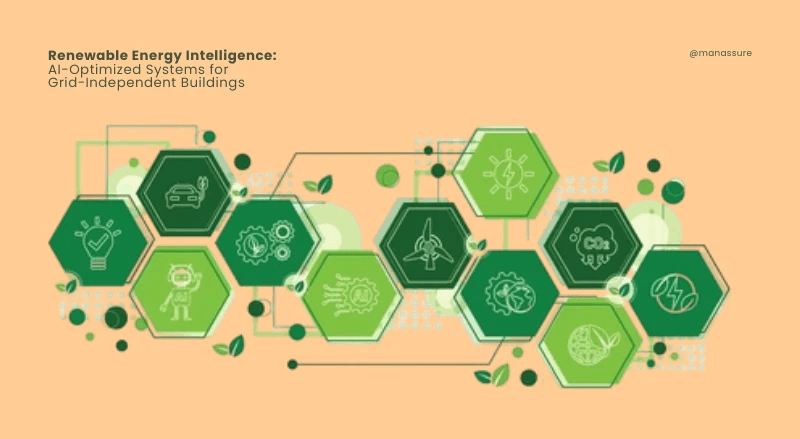"Smart buildings" have become a catchphrase in commercial real estate—often synonymous with a checklist of devices: motion sensors, connected HVAC systems, cloud-based dashboards, and energy meters. But true intelligence in buildings goes far beyond the presence of technology. It lies in how technology is aligned with purpose—to reduce operating costs, optimize comfort, enhance sustainability, and support occupant wellbeing.
At Manassure, our experience managing high-performance developments has shown us this: a smart building is only as intelligent as its intent. Technology must not only respond to inputs, it must interpret them in context, learn from usage patterns, and deliver consistent value over time—both for investors and those who occupy the space.
Defining Smart Beyond Devices
What truly distinguishes a smart building is not how many systems it connects, but how meaningfully those systems interact. A motion detector that switches off lights after ten minutes may save energy—but a smart lighting system understands daylight patterns, occupancy density, and weather changes to make informed decisions on brightness, temperature, and activation zones.
Likewise, HVAC zoning alone doesn’t make a system intelligent. But when thermal feedback, occupancy flow, external humidity, and historical usage data come together to modulate air delivery dynamically across floors and departments—that’s when intelligence emerges. It's not about control for control’s sake. It's about contextual autonomy.
Energy Data Isn’t Enough. Insight Is.
Most new buildings boast an energy dashboard. But data without interpretation is just noise. Smart buildings don’t just measure; they model, predict, and act.
By integrating energy performance data with simulations, a building can anticipate demand spikes, evaluate how retrofitting decisions will impact future consumption, or compare the real-time behavior of one floor versus another. These insights lead to smarter capital allocation—whether it's a choice between solar panels or thermal glazing, or decisions around maintenance cycles and ROI.
The result isn’t just lower utility bills. It’s an energy strategy—one that aligns with sustainability goals, reduces operating costs, and boosts eligibility for certifications like LEED, IGBC, or GRIHA.
Occupant Experience is the Real Metric
A building that minimizes electricity use but causes fatigue or discomfort is not intelligent. Too many projects treat occupant comfort as a secondary concern—resulting in indoor environments that are sterile, imbalanced, or toxic in the name of savings.
Smart systems must support human health. Buildings designed with CO₂ monitoring and adaptive fresh air intake protect cognitive function. Use of low-emission materials, noise-mitigating layouts, and circadian lighting creates an atmosphere conducive to wellbeing. Smart isn’t silent—it listens, and adjusts in favor of the people inside it.
Data-driven ventilation, lighting, and air quality management are no longer expensive luxuries. They're strategic investments that directly impact employee productivity, tenant satisfaction, and ultimately, long-term occupancy rates.
Technology Is Only As Smart As The Project Governance
While sensors and automation attract headlines, many smart projects fail due to poor execution, misaligned vendors, or siloed systems. At Manassure, intelligence begins not in the wiring but in the planning.
From day one, project design must integrate a vision for how systems will communicate, learn, and scale. That includes using digital twins to model outcomes, establishing common data protocols among contractors, and setting up performance monitoring that persists long after handover. Intelligent outcomes require intelligent coordination—across procurement, construction, operations, and boardroom decision-making.
Smart systems can’t be bolted on at the end. They must be embedded from the foundation, literally and figuratively.
The Returns You Don’t See on the Balance Sheet
There’s no denying that smart buildings save money. Predictive maintenance reduces breakdowns. Automated controls optimize energy use. But the full ROI of a well-designed smart building includes reputational value, ESG alignment, and long-term risk reduction.
Properties with transparent energy and water metrics attract institutional investors and qualify for green financing at better terms. Companies operating in certified smart buildings gain an edge in hiring and retention. And developers who build intelligently are better positioned for future regulations, which are only becoming stricter around sustainability and performance disclosures.
Smart buildings aren’t about selling features. They are about earning trust—through data, accountability, and performance.
Designing Beyond Devices
Technology is only one piece of the puzzle. A building becomes smart when its systems, architecture, and purpose work in unison. That means putting function before flair, and designing for longevity, adaptability, and human outcomes—not just short-term compliance or aesthetic appeal.
At Manassure, we don’t deploy intelligence for effect. We build intelligence into the DNA of every structure—so that real estate assets don’t just stand taller, but think deeper.
At Manassure, we don’t just design for today—we design for the next decade.
#SmartBuildings #HumanCentricDesign #BuildingPerformance #Manassure #ManasSahu #GreenRealEstate #EnergyModeling #IntelligentConstruction #ESGReady #DigitalInfra
Share this Post:

Related Reads for You
Commercial Real Estate, Corporate Governance, ESG : Sustainable Responsible, Marketing Management, Project Development, Real Estate Advisory, Real Estate Investment, Transforming intelligence





